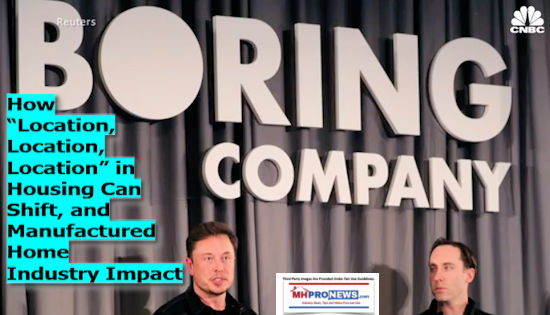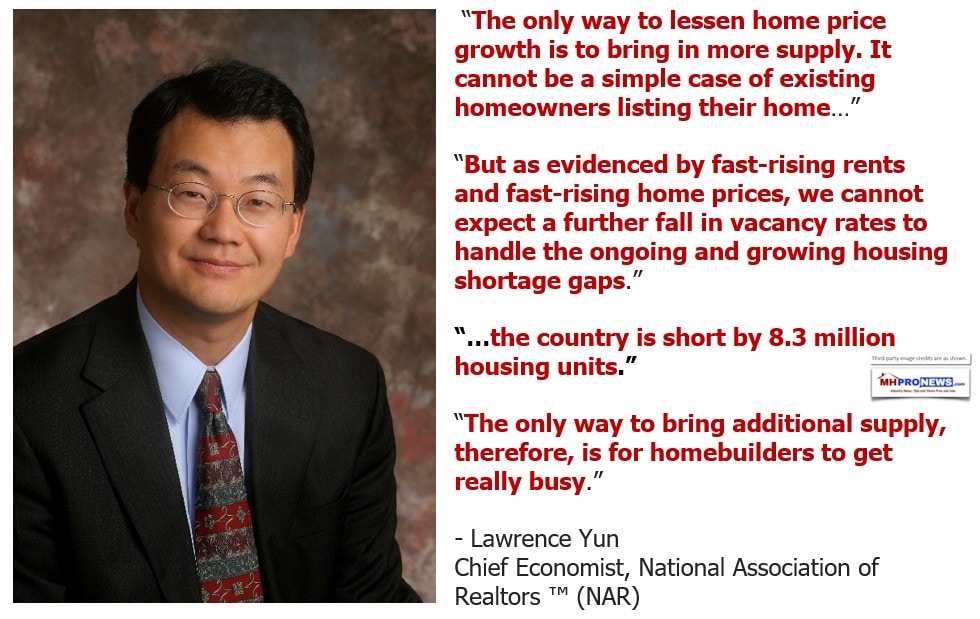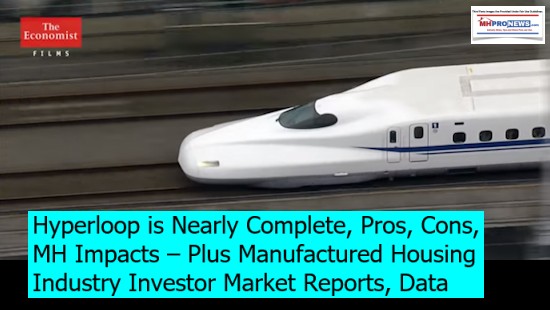
One of the challenges facing manufactured housing for years falls under the heading of “Location.”
In real estate, there is an axiom that the three most important things about a property are location, location, and location. Per the Real Deal, “the “Yale Book of Quotations” found the phrase used in a real estate classified ad in the Chicago Tribune in 1926,” so that notion has been around for nearly a century.
The Balance states that, “In a nutshell, location, location, location means identical homes can increase or decrease in value due to location.”
All of that may be true, but during an affordable housing crisis, there are tensions created by the dynamics that surround location.
It may sound like a fine point, but location is a common influence on not just housing prices, but land prices. Among the costs associated with all forms of home building, is the cost of the underlying real estate — the value of the raw or developed land.
Rural land tends to be less costly than urban or suburban land does. But among the reasons that urban or suburban land is higher, is that there are more people – think more demand – in a metro than in rural areas, by definition.
While there are exceptions, “that metro land cost is higher” rule-of-thumb, along with other dynamics, such as
- work,
- schools,
- shopping,
- worship,
- social opportunities,
- and entertainment, to name a few –
coupled with the law of supply and demand, has for centuries meant that an identical residence in a metro area will tend to cost more than the same residence in a rural setting.
Commuting time has also influenced the “location, location, location” realty mantra for those who are housing hunting.
And that last point, about commuting time, is what is facing a disruptive development that could prove useful to the manufactured housing industry.
But before moving onto the commute issue, a few specific points about manufactured homes in urban and suburban areas.
Some examples will make serve to make the case.
- Aging manufactured home communities with locations that make them appealing for redevelopment has caused thousands of communities to vanish, while only a few hundred new properties have been opened. The linked articles can be read later for additional facts, insight, and understanding.
- Scattered lot placements of manufactured homes have suffered from zoning discrimination – NIMBYism – an issue that tends to push the locations of homes into more rural areas, in a largely urban and suburban society.
Local Star Chambers Wage War on Affordable Housing – manufacturedhomelivingnews.com
“The one issue that will prohibit affordable housing in the future – not only manufactured homes, but site-built – is local zoning and covenants.” – Jay Hamilton, executive director of the Georgia Manufactured Housing Association Armed with facts, figures and studies, he explained that manufactured homes were as well or better built, more fire resistant, more wind resistant – and far more affordable – than their site-built counterparts.
- Affordable Housing is in heavy demand. But when the locations that a manufactured home can be placed would require a long commute, that commute time can lead many to pass on the otherwise lower cost manufactured home option.

How Emerging Tech is Poised to Change Some, or Perhaps Much of the Above
The Daily Business News has reported previously on the emerging hyperloop technology.
Can the Hyperloop Benefit Manufactured Housing, Millions of Home Seekers? w/Videos
Billionaire Elon Musks’ first hyperloop is nearing completion in Los Angeles, as the Daily Business News recently reported.

Musk is known for the Tesla, SpaceX and his Boring Company, among other ventures.

In Chicago, Elon Musk’s Boring Company has been awarded a contract to build an underground system that will hit an estimated 150 MPH. Once completed, various sources say it will make the trip from downtown to Chicago O’Hare Airport in about 15 to 20 minutes, instead of some 45 minutes.
The Verge is reporting that the project could start in 3 to 4 months. It could be finished in under 2 years. And for cash-craving governments, note this point. That the estimated one billion dollar project will be done using only private capital.
Using these principles, picture other metro areas developing rapid-transit people-movers – be they hyperloop or some other underground system – could dramatically reduce commute times. That in turn would open up more opportunities for lower cost construction, such as manufactured housing.
Other Areas of Industry Concern
This could be part of a revolutionary change for manufactured housing’s ability to attract and sell more prospective urban buyers in the near future. But as is often the case in MHVille, there are still hurdles.
The industry faces a range of concerns, including, but not limited to:
- Public perception;
- Financing – such as a robust Duty to Serve (DTS), plus reforms to FHFA and other GNMA lending;
- Arguably monopolistic practices – which concerned industry and other expert voices believe is and has been stunting the industry’s growth;
- Failure to enforce the law, particularly the Manufactured Housing Improvement Act of 2000, and the aforementioned DTS and related.
See related reports, linked below, for more details on what looks to be a seriously disruptive trend, that is just over the horizon.
Investors, consider what this could mean for those willing to think long-term, and act with vision, passion, and drive. This could prove to be one of several possible magnets, attracting more to enter into the manufactured housing space. Time will tell. “We Provide, You Decide.” © ## (News, analysis, and commentary.)
(Third party image, and/or content, are provided under fair use guidelines.)
Related Reports:
Truth or Consequences – Monday Morning Sales, Marketing Meeting

1) To sign up in seconds for our MH Industry leading emailed news updates, click here.
2) To provide a News Tips and/or Commentary, click the link to the left. Please note if comments are on-or-off the record, thank you.
3) Marketing, Web, Video, Consulting, Recruiting and Training Resources


























